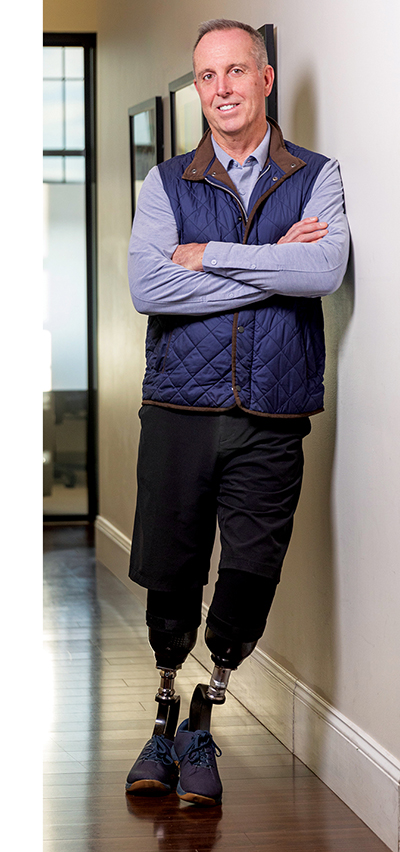
A few weeks after having both legs amputated below the knee, Paul Kent learned that most American amputees don’t have access to a prosthesis.
“I’m thinking, ‘How did I get so lucky?’” says Kent. “I’ve got two pairs of legs. Why isn’t that the norm instead of an aberration? I almost feel guilty because I’m doing so well. My friends tell me, ‘You shouldn’t feel guilty.’ The way I’m not going to feel guilty is by launching this benefit corporation.”
Kent is referring to (dis)ABLED Life Alliance, the company he unveiled December 1, on his first ampuversary. Unlike traditional corporations, benefit corporations strive to generate public prosperity alongside private profits. The new venture’s initial mission is to scale up amputee support programs to promote better outcomes for all.
Kent described his venture to us last month. Here are some highlights from our conversation, edited for clarity. Visit Amplitude’s website for a longer version of this interview.
How did you become a bilateral amputee?
I have a genetic neuropathy. About nine years ago I didn’t heal from a wound and ended up losing part of my foot. That was the first of 13 surgeries and various battles with infection, sepsis, and hospitalization. If I didn’t have this [amputation] surgery, I’d probably be dead by now.
Where did you get the idea for a benefit corporation?
For a long time, I worked on Wall Street. Then I joined a group called Benefunder that raises investment capital to solve social problems—and the disability community is riddled with problems. If I had known 60 percent of American amputees don’t have a prosthesis, I might not have amputated. They’re developing space-age prosthetics, but 60 percent of the market doesn’t even have a wood peg and a rubber sock. I think I can leverage my familiarity with [social impact investing] to make a dent in that.
What’s your pitch to potential funders?
We’re the ultimate matchmaker for scalable impact. I want to help family offices and foundations make a difference in the disability community by supporting researchers and clinics. Funders may want to help amputees get prosthetics, but they’re not aware of all the brilliant research and wonderful [clinical] programs. I think there are funders who will put up significant resources if they’re convinced their capital will help solve problems at scale.
What’s the long-range vision?
There are hundreds of millions of dollars available for disability and inclusion philanthropy. I want to start with amputees so every person who loses a limb can have confidence that they’ll get a prosthesis, physical therapy, and all the support they need to resume a normalized life. Then let’s see if we can’t get this collaborative effort to support the broader disability community.



